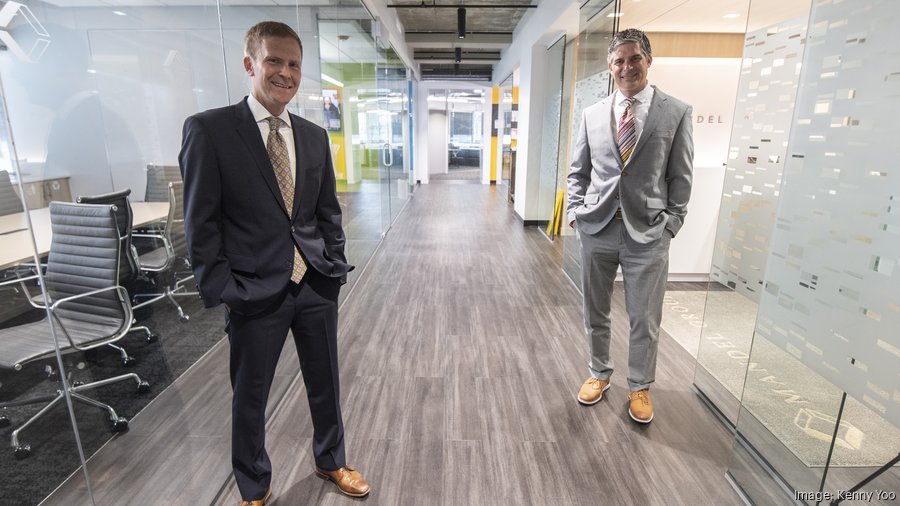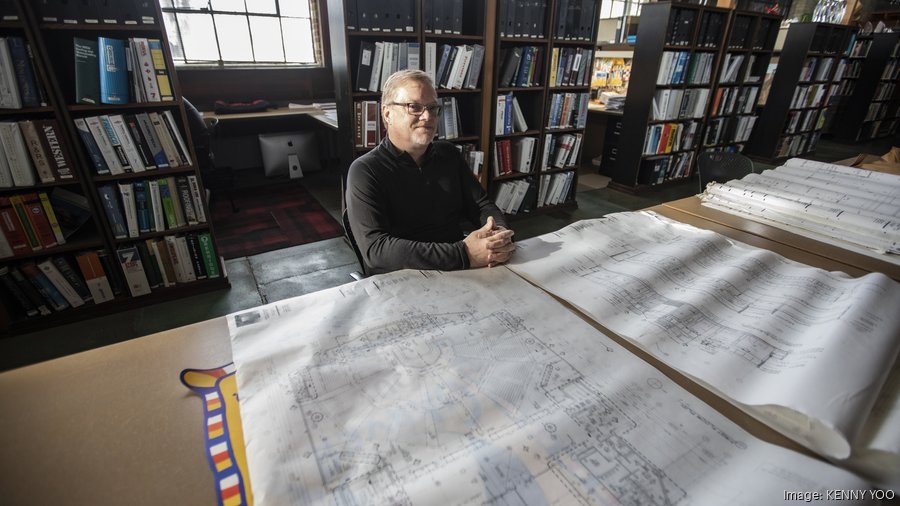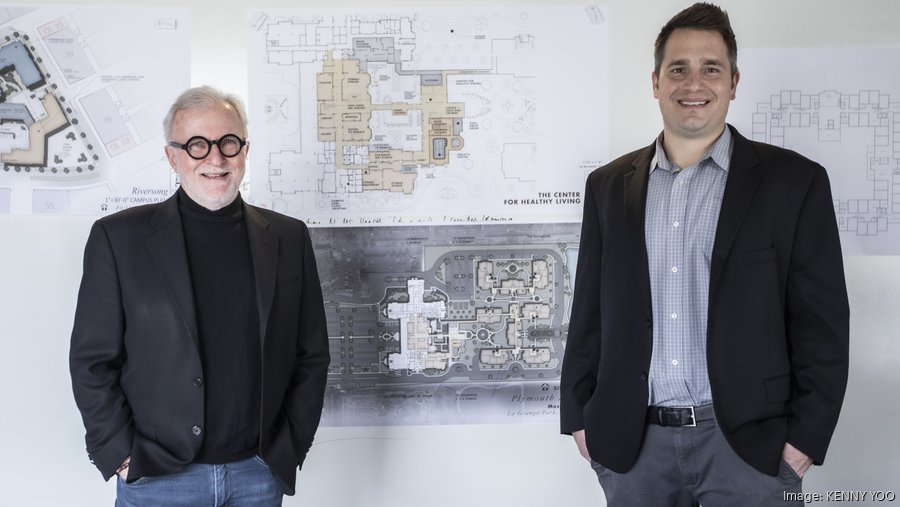It starts with the decision by founders that the business should outlive them and, if things are done right, continue to prosper for decades to come.
For aging owners and leaders of real estate firms across the country, keeping it alive isn’t always the easiest option. They could instead sell to another company, contributing to consolidation currently happening across all industries and avoiding the confrontation that can come from picking a successor from within, said Christopher Lee, CEO and founder of Los Angeles real estate consulting firm CEL & Associates Inc.
“The easy option is not to go pick a CEO, it’s to go sell your company,” Lee said. “As companies age, they have a choice, and if they can’t find the right leader it’s a lot easier to sell. Everybody gets paid off, and you move on. You avoid all of the confrontations you don’t want to have.”
Lee advises 500 real estate clients, including in southeastern Wisconsin, and often is called to help company leaders navigate the succession process. Considering many real estate firms were founded in the range of 40 to 60 years ago, the question of passing the torch is coming up for a lot of them, he said.
That includes architecture, development and construction firms in southeastern Wisconsin. Some sell, and many owners promote their children. Others take the sometimes difficult path of choosing new leaders and owners from inside their current ranks.
That demands owners, even after making the personal decision to start stepping back, to address a whole series of questions about their longtime associates and the future of their businesses. Key issues include which managers have the financial wherewithal to become future owners and the relationships with clients and the broader community, said Marvin Bynum, shareholder in the real estate team of Milwaukee law firm Godfrey & Kahn SC. How do they set up clear communication to avoid bad blood among those who aren’t picked as a new leader?
“You’ve got to be sensitive to everyone’s feelings to a certain extent, but at the end of the day the founder is going to want to make sure the business survives long after he or she is gone,” Bynum said. “I think they are going to make moves and choices to ensure, as much as they possibly can, that it happens.”
Here’s the story of how some Milwaukee-area firms pass the torch and set the path to remain in business, and locally owned.
Mandel Group Inc.
- Location: Milwaukee
- No. of workers: 170
- Experience: Real estate firm focusing on multi-family housing and mixed-use development; also performs property management
“You always want to keep your eye on succession planning because you have duties to others.”
Barry Mandel, founder, CEO and chairman
Barry Mandel’s mantra while discussing succession planning was: “I only want to be with our company until I can’t provide value to the company.”
Mandel Group Inc. last July announced its succession plan and next generation of leaders, a decision that followed years of preparation work by founder and CEO Barry Mandel. Inherent in that effort is the suggestion that, sometime in the future, the 170-person Milwaukee firm needed new leaders better suited for the changing world and its demands. His job was to help find them.
“I was CEO of a company that started with four people and less than $100 million of assets,” Mandel said. “Now we have over $1 billion of assets. What kind of leadership do you need to do that? What skill sets do you need for the future? As you get bigger, you need different governance, you need different skill sets.”
Mandel’s approach demonstrates that succession planning, while very personal to those involved, ultimately isn’t about the outgoing CEO or the incoming leaders or owners. When done right, it’s an objective process for the well-being of the company itself.
“My feeling is I’d be much better off with the new leadership group,” Mandel said. “The best attribute of a leader is hiring people who are better than themselves at any one thing.”

Mandel Group hired an industrial psychologist to interview more than 10 people, including Barry Mandel himself, and get feedback from the employees they manage. Personalities were assessed for compatibility with the demands of different leadership roles and the company’s evolving strategy. Mandel Group asked consultant Christopher Lee of CEL & Associates Inc. to participate in the succession process.
“It’s not necessarily the CEO and the existing people who drive this process, because it needs to be objective as well as subjective,” Mandel said. “There’s been a strong reliance on Chris Lee, our business consultant, as well as our board.”
Ian Martin, who had been at Mandel for five years, fit the profile for president, and Phil Aiello for chief operating officer. Mandel Group had to hire from outside for its chief financial officer, bringing Angie Achenbach on board in late 2018.
Mandel reinvested his own finances back into the company to make the ownership and leadership transition possible. Succession planning carries substantial costs, Mandel said, and someone had to help pay for the “new” company that would be created through the transition.
“You decide how much you want to risk moving forward, and how that new group takes some of that risk over time from you,” Mandel said.
Mandel said he put money back in because, even though he eventually may not be directly involved in the company’s operations, he sees it as a good investment.
“It’s a question of what you want to do with the rest of your life,” he said. “I said that I only want to be with our company until I can’t provide value to the company.”
The Kubala Washatko Architects Inc.
- Location: Cedarburg
- No. of employees: 29
- Experience: Created in 1980, the firm has experience in a wide spectrum of building types with an emphasis on placemaking and sustainable design.
“If we didn’t do that, the studio would start to disintegrate and I would say it would become more ordinary.”
Allen Washatko, co-founder
When Tom Kubala and Allen Washatko considered the future of the architecture firm they created in 1980, selling to an outside party was not an option.
It could’ve compromised the identity and approach they worked to create that helps the Cedarburg firm stand out. It also could’ve hurt relationships and a sense of fairness for people who had worked there a long time, Washatko said.
“When you transition out of a firm, the firm that shows up after you is going to be different,” he said. “If you don’t start on a good footing, it’s hard to know where the firm is going to wind up because there may not be as much of a clear path. It then kind of falls to personal interests, or maybe more generic thinking about what an architect is.”
Talks over spreading around The Kubala Washatko Architects Inc.’s ownership started in 2008, but the Great Recession hit and substantially hurt the value of the company, Washatko said. But by 2016, the co-founders were ready to revive the hand-off, and set a meeting where both brought a list of people they thought should become the next generation of partners and owners.
“It was really interesting that our lists were almost identical,” Washatko remembered.
The five new owners they chose are Ethan Bartos, leader of the firm’s Seattle studio; Matt Frydach; Erik Hancock; Vince Micha, a 36-year veteran of TKWA; and Chris Socha, who runs the TKWA UrbanLab in Milwaukee.
“As partners, even though we have different percentages of ownership, we see ourselves as equal partners and equal voices because, collectively, a much deeper and more meaningful decision-making happens,” Micha said. “We had a good mentor on how to work with one another. What you’ll find is, if you create a safe place for idea exchange, people are more open to sticking their neck out and offering an idea.”

Picking the owners was step one. The second was making it work financially. Four of the partners had families, and a large up-front payout for ownership shares could’ve been an overwhelming burden. The solution was to have the five pay a combined $10,000 cash and promise the co-founders six years worth of monthly payouts from the firm.
“We didn’t want to put stress on the practice as we moved along,” Washatko said.
Kubala and Washatko decided how to proportion ownership among the five. It was based on years spent with the firm, with Micha taking a larger stake since he had been with TKWA since 1984. Micha, age 62, also will likely be the first to retire and sell his stake back to the firm.
Micha expected that would happen in about five years. In a move that can help retain long-term employees, it means one or two existing people at the firm will have a shot at becoming partners and taking over the shares Micha currently holds.
“We’re actually in the process of identifying my replacement, so of course that would be a decision by the remaining four partners,” he said. “It leaves the door open for existing staff to step into an ownership role.”
AG Architecture
- Location: Wauwatosa
- No. of workers: 45
- Experience: AG Architecture works on senior living developments nationally, and also has experience in market-rate apartments and mixed-use projects that incorporate retail.
“If it just came down to personalities I think there would’ve been a lot of people with their noses bent out of shape. This has to be done very, very intentionally.”
Gene Guszkowski, CEO
The meeting where Eric Harrmann was first told he’d become a top leader at AG Architecture had to happen covertly, and away from the firm’s main office.
He drove to the Brookfield offices of consultant Living as a Leader, which had been advising the Wauwatosa firm’s CEO Gene Guszkowski and chief operating officer Tracey Schnick on succession planning. Harrmann was excited going into that December 2019 meeting because he knew it meant some kind of promotion. He just wasn’t sure what.

Guszkowski told him, “You’re the dude now,” and would become co-leader of the firm with Schnick.
“You really need to manage how that information comes out,” Schnick said. “We brought Eric in, had meetings about how is this going to work, how are we going to roll it out?”
Choosing a new top executive from inside a company can be touchy, and must be done carefully to keep other leaders from getting salty. That’s why the meeting with Harrmann was done quietly, and the eventual sharing of with others carefully coordinated.
“We had to intentionally plot out how we are going to do this,” Guszkowski said. “How these conversations are going to go. Think about the personalities. Think about what their actual role is in the company and how they will be effective. We had to plot all of that out.”
Schnick and Guszkowski zeroed in on Harrmann for the chief design officer job in summer 2019, months before they brought him into the discussion that December. They spent the time working with Nancy Lewis of Living as a Leader to define Harrmann’s role as chief design officer, and set up a system of departments that others in the company would lead.
As Guszkowski said, it was all very intentional. In concert with Harrmann being elevated, others in the company gained new positions overseeing engineering or finance, for example. During a series of meetings last year in January and February, Schnick, Lewis and Guszkowski held separate meetings where those managers learned of Harrmann’s promotion, and their own.
The remainder of the firm was told during a group meeting last March.
“As we laid out this new plan, it revolved around each member of the leadership team being a director or someone directly responsible for a task in our office,” Harrmann said.
For AG Architecture, succession was about how to manage the company going forward, not the financing involved in passing the torch. AG Architecture in 2009 figured out the financial question by creating an employee stock ownership plan. That meant the firm is owned by about 45 current and past employees.
